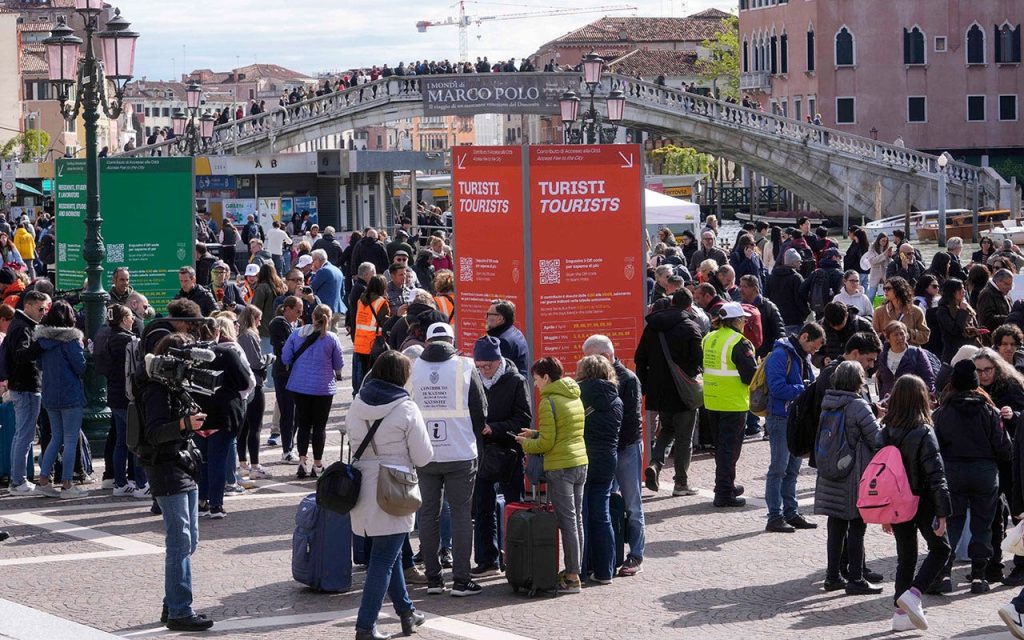Venice has launched a pilot program to charge day-trippers an entry fee of $5.35 in an effort to reduce the tourist influx on peak days. City officials believe that finding a balance between catering to tourists and prioritizing the needs of residents is essential. The main goal of the program is to gather accurate data on tourist numbers to effectively manage over-tourism in the city. This initiative has attracted global attention as Venice faces challenges due to the increasing number of visitors.
A total of 29 dates through July have been designated for the test phase, with special entrances for tourists separate from residents, students, and workers. Visitors must download a QR code to pay the entry fee, which stewards help with at the main train station. City officials are determined to safeguard residents’ spaces and discourage day-trippers from visiting on certain days to alleviate the strain on the city. Even though the entry fee might feel unusual for Italians like Arianna Cecilia, who visited with her boyfriend, compliance is necessary to ensure that the program is effective.
The requirement applies to visitors arriving between 8:30 a.m. and 4 p.m., and those who do not comply face fines of 50 to 300 euros. Outside of these hours, access is free and not monitored. Venice has been grappling with over-tourism for years, and the pilot project aims to generate more precise data on tourist numbers. By tracking day visitors, who form the majority of the crowds in Venice, the city hopes to improve its management of the tourism phenomenon and make the city more livable for its residents.
According to officials, Venice can no longer sustain high numbers of day-trippers, with over 30,000 to 40,000 visitors causing congestion in the city. The narrow alleyways become crowded, making it difficult for residents to move around. Some residents are skeptical about the new system’s effectiveness in reducing mass tourism, suggesting that more attention should be focused on increasing the resident population and essential services. Last year, the number of tourist beds exceeded the official resident count for the first time, highlighting the imbalance in the city.
Despite opposition from some residents and activists like Tommaso Cacciari, who organized protests against the entry fee, nearly 6,000 people have already paid to download the QR code. The pilot program has generated significant interest from other cities struggling with mass tourism, both in Italy and abroad, suggesting a need for similar solutions to manage visitor numbers. Venetians like Marina Rodino are concerned about the impact of the entry fee on local businesses and the influx of young people in the evenings.
Marina Rodino, a long-time resident of Venice, believes that the new entry fee requirement does not address the core issues affecting the city. She emphasizes the importance of maintaining a vibrant community with inhabited houses and functioning stores. While the pilot program aims to curb over-tourism and protect residents’ spaces, its implications remain a matter of debate among locals. The initiative sheds light on the challenges faced by Venice in balancing the needs of its residents with the demands of a rapidly growing tourist population.


